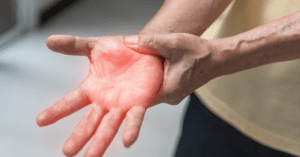
Snapshot: What is Neuropathy?
Our nervous system consists of the central and the peripheral nervous system. The brain and spinal cord are components of our central nervous system (CNS), while the peripheral nervous system Read More…
Bill Nye is back in his lab with NAF and Biogen—breaking down the science of Friedreich Ataxia in a new video series. WATCH NOW
A collection of resources for individuals and families affected by Autosomal Recessive Spastic Ataxia of Charlevoix-Saguenay (ARSACS).
Autosomal Recessive Spastic Ataxia of Charlevoix-Saguenay (ARSACS) is caused by a genetic mutation that is passed on from parents to their children. ARSACS leads to problems with balance and coordination, as well as stiffness in the legs and the progressive loss of sensation in the hands and feet.
For complete information about symptoms, diagnosis, and treatment of Ataxia, visit our What is Ataxia? page. This page contains NAF’s resources that are specific to ARSACS.
Sign up for our mailing list to stay up-to-date on Ataxia news.
Presented by Nicolas Dupré, MD, MSc and Élise Duchesne, PhD
This webinar covers the causes and symptoms of ARSACS, the typical diagnostic journey for those affected, and what to expect for clinical care.
Presented by Justin Wolter, PhD
This webinar covers how ARSACS is studied and gives an overview of the current state of research and drug development for the disease.
NAF offers webinars on many topics to help you live better with Ataxia. Visit www.ataxia.org/webinars to find other helpful presentations.
Participating in a research study or clinical trial is one way to take an active role in furthering understanding and treatment of Ataxia. It is also a way to get access to new treatment options before they are widely available. To find studies that are enrolling patients, visit our Help Develop New Treatments page.
Autosomal Recessive Spastic Ataxia of Charlevoix-Saguenay (ARSACS) is a rare neurodegenerative disorder. It is caused by mutations in the SACS gene. In the Charlevoix-Saguenay region of Québec, the incidence of ARSACS is estimated to be in 1,500 to 2,000 individuals. The ARSACS incidence rate outside of Québec is less well known. However, ARSACS is known to be more common in areas around the world with French ancestry.
Like many other forms of Ataxia, ARSACS is marked by poor balance and coordination. In fact, the word Ataxia means incoordination. There can also be problems coordinating muscles that control speech, swallowing, and vision.
People with ARSACS also develop neuropathy, which is the progressive loss of feeling in the hands and/or feet. Spasticity, particularly stiffness in the legs, is common. Other symptoms of ARSACS may include high-arched feet, curves in the spine, urinary problems, intellectual disability, hearing loss, and seizures.
ARSACS symptoms usually begin between the ages of 2 and 5 years. However, symptoms can sometimes begin in the teenage or early adult years. The severity of ARSACS symptoms may vary between patients, even within families.
ARSACS is a progressive disorder. Most patients will require the use of a wheelchair by the time they reach 30 to 40 years old. Treatments such as physiotherapy, occupational therapy, and speech-language therapy can significantly improve the lives of people with ARSACS.
ARSACS is a genetic disorder, which means that it is an inherited disease. The abnormal gene responsible for this disease is passed along from generation to generation by family members who carry it. Men and women are equally likely to inherit the genes that cause ARSACS.
Genetic diseases like ARSACS occur when one of the body’s 20,000 genes does not work properly. Genes are microscopic structures within the cells of our bodies that contain instructions for every feature a person inherits from his or her parents.
ARSACS is an autosomal recessive condition. This means that an individual only develops symptoms of the disease if both copies of their SACS gene are not working properly.
An individual who has one copy of an altered or nonfunctioning SACS gene does not develop any neurological symptoms and is called a carrier. For people who are carriers, the normal SACS gene compensates for the nonfunctioning copy of the gene. However, a child whose parents are both carriers can inherit a “double dose” of the altered SACS gene and will therefore develop ARSACS.
Most of the time, carriers have no idea that they have an abnormal SACS gene. This is because they do not have any symptoms or medical problems. It is often only when a child is diagnosed with ARSACS that the parents learn that they are both carriers. When both parents are carriers, each of their children has a 25 percent chance of having ARSACS and a 50 percent chance of being a carrier.
Gene tests can be performed for diagnostic purposes to determine what kind of Ataxia is within a person or family. Genetic testing can also be done, in some circumstances, even before there are symptoms, to determine whether a person carries the abnormal gene or genes that cause Ataxia. This is called predictive or presymptomatic testing. A gene test can also be used to determine whether a fetus has an abnormal Ataxia gene. This is called prenatal testing. Anyone who is considering a predictive or prenatal test should consult with a genetic counselor to discuss the reasons for the test, the possible outcomes, and how those outcomes might affect the person emotionally, medically, or socially.
A neurologist is often the most helpful specialist in recognizing symptoms and diagnosing the disease that causes Ataxia. A neurologic examination can determine whether a person has symptoms typical of ARSACS. MRI brain imaging may be used to confirm cerebellar atrophy.
A definitive diagnosis of ARSACS is established following genetic testing. This confirms that someone has a mutation that causes ARSACS in their SACS gene.
SCAsource provides Ataxia research news, directly from researchers to the Ataxia community. Visit SCAsource to see their full collection. Here is a collection of articles about ARSACS.

Our nervous system consists of the central and the peripheral nervous system. The brain and spinal cord are components of our central nervous system (CNS), while the peripheral nervous system Read More…
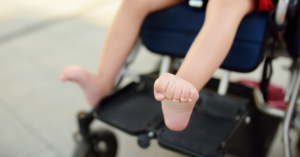
Spasticity is a condition where muscles involuntarily stiffen, impeding normal smooth movements. Spasticity can present in varying severities with varying impacts on daily life. For example, minor spasticity resulting in Read More…
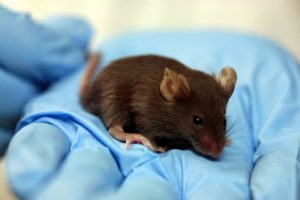
Written by Dr. Ambika Tewari Edited by Larissa Nitschke Tipping the balance of the protein Sacsin alters outcomes in a mouse model of ARSACS There are many different types of Read More…
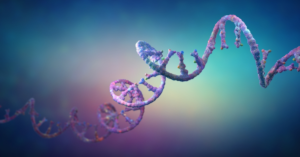
What is a recessive disorder? A recessive disorder is one that has a specific disease mechanism. For a recessive disorder to occur, both copies of the causative gene must be Read More…
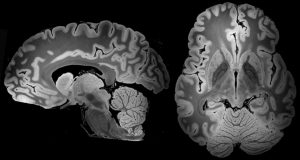
What is it? Magnetic resonance imaging (MRI) is a type of technology used to take detailed pictures of the body. It is commonly used to detect abnormalities in the body, Read More…

Written by Dr. Sriram Jayabal Edited by Dr. Brenda Toscano-Marquez Scientists uncover SACS, a gene containing the largest exon identified in vertebrates, which leads to ARSACS when mutated. What is Read More…
